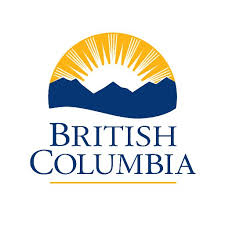erosion
Type of resources
Available actions
Topics
Keywords
Contact for the resource
Provided by
Years
Formats
Representation types
Update frequencies
status
Service types
Resolution
-
Le jeu de données « Bassin du ruisseau Tobacco Sud - courbes de niveau de 10 cm » est une représentation linéaire des données LiDAR du jeu de données réglée selon une courbe de niveau de 0,1 mètre. Pour plus d'information, consulter : http://ouvert.canada.ca/data/fr/dataset/734078a9-9aa1-44a1-9e74-dc9387a9ecfe
-
The "South Tobacco Creek Watershed - 10 cm Contours" dataset is a linear representation of the LiDAR DEM data set to the closest 0.1 meters. For more information, visit: http://open.canada.ca/data/en/dataset/734078a9-9aa1-44a1-9e74-dc9387a9ecfe
-
The "South Tobacco Creek Watershed - 10 cm Contours" dataset is a linear representation of the LiDAR DEM data set to the closest 0.1 meters. For more information, visit: http://open.canada.ca/data/en/dataset/734078a9-9aa1-44a1-9e74-dc9387a9ecfe
-
Le jeu de données « Projets de données LiDAR d'Agriculture et Agroalimentaire Canada » a été créé à partir de données spatiales existantes. Il contient l'empreinte (aperçu) de toutes les données LiDAR diffusées ouvertement par Agriculture et Agroalimentaire Canada. La méthode LiDAR (détection et télémétrie par ondes lumineuses) consiste en l'acquisition de points de localisation au moyen d'une technologie de télédétection optique. Ce jeu de données fournit des renseignements de base sur l'emplacement, la source et les propriétés des données. Pour plus d'information, consulter : http://ouvert.canada.ca/data/fr/dataset/a760f9e0-7013-4187-9261-2e69b01edd9a
-
The Agriculture and Agri-Food Canada's LiDAR Projects dataset was created from existing spatial data. It contains the footprints (outlines) of all the LiDAR data that is openly distributed by Agriculture and Agri-Food Canada. LiDAR (Light Detection And Ranging) is a method of acquiring survey points using optical remote sensing technology. The dataset indicates basic information about the location, source and properties of the data. For more information, visit: http://open.canada.ca/data/en/dataset/a760f9e0-7013-4187-9261-2e69b01edd9a
-
Le jeu de données « Bassin du ruisseau Tobacco Sud - courbes de niveau de 10 cm » est une représentation linéaire des données LiDAR du jeu de données réglée selon une courbe de niveau de 0,1 mètre. Pour plus d'information, consulter : http://ouvert.canada.ca/data/fr/dataset/734078a9-9aa1-44a1-9e74-dc9387a9ecfe
-

STE_SCANNED_MAP_BOUNDARY_SP includes an index of the mapsheet grid location of Soils, Terrain, Ecosystems and related scanned maps (including Agriculture Capability and Climate Capability maps). These maps are intended for on-screen viewing or printing. The majority of the maps have been geo-referenced. Mapping may not cover the whole map grid area. Some maps are interim or draft and may have been superseded. Some files are of related legends and map project text. Associated scanned map boundary attributes describe the project map (project level metadata) and provide a link for downloading the map, plus links to related reports, geo-referenced maps, and GIS digital data available from other sources. ATTENTION - The IMAGE_URL link is only useable by BC government staff. Public users can download the scanned maps by using the ECOCAT_URL link. There is no charge for the scanned map files. Please note that some maps and more recent mapping may also be available in digital GIS format. See - Ecosystem and Terrain Mapping Data Inventory.
-

Terrestrial Ecosystem Information Project Boundaries contains boundaries (study areas) and attributes describing each project (project level metadata), plus links to the locations of other data associated with the project (e.g., reports, polygon datasets, plotfiles, legends). TEI inventories describe the physical and biological attributes of ecosystems. TEI currently includes Terrestrial Ecosystem Mapping (TEM), Predictive Ecosystem Mapping (PEM), Sensitive Ecosystems Inventory (SEI), Terrain Mapping (TER), Soil Mapping (SOIL), Species Distribution Mapping (SDM) and Wildlife Habitat Ratings (WHR) projects. Current version: v11 (published on 2024-10-03) Previous versions: v10 (published on 2023-11-14), v9 (published on 2023-03-01), v8 (published on 2016-09-01)
-

SEI_Polygons contains Sensitive Ecosystems Inventory polygons with key and amalgamated (concatenated) attributes derived from the RISC (Resource Inventory Standards Committee) standard attributes. SEI identifies and maps rare and fragile terrestrial ecosystems. Ecosystems mapped may include (but are not limited to) older forests, woodlands, coastal bluffs, herbaceous and sparsely vegetated ecosystems, grasslands, riparian ecosystems and wetlands. SEI methods include manual air photo interpretation or theming of other Ecosystem Mapping, each supported by selective field checking. This layer is derived from the STE_TEI_ATTRIBUTE_POLYS_SP layer by filtering on the PROJECT_TYPE attribute. Project types include: SEI, TEMSEI, TEMSET, and SEIWHR. Current version: v11 (published on 2024-10-03) Previous versions: v10 (published on 2023-11-14), v9 (published on 2023-03-01), v8 (published on 2016-09-01)
-

STE_TER_ATTRIBUTE_POLYS_SVW contains Terrain Mapping (TER) polygons with key and amalgamated (concatenated) attributes derived from the RISC (Resource Inventory Standards Committee) standard attributes. Mapping criteria vary considerably between the terrain inventory, bioterrain and terrain stability mapping projects contained in this layer. TER divides the landscape into units according to surficial materials, landforms and geomorphological processes using the Terrain Classification System for British Columbia. TER methods include manual air photo interpretation supported by selective field checking. This layer is derived from the STE_TEI_POLY_ATTRIBUTES_SP layer by filtering on the PROJECT_TYPE attribute. Project types include: TEM, TEMNSS, TEMPRE, TEMSEI, TEMSET, TEMTSM, TSM, TSMREC, TSMDET, TIM, TBS, TBT, TIMSOI, TEMWHR, TEMSDM, TEMPRW, and TEMSEW. Current version: v11 (published on 2024-10-03) Previous versions: v10 (published on 2023-11-14), v9 (published on 2023-03-01), v8 (published on 2016-09-01)
 Arctic SDI catalogue
Arctic SDI catalogue